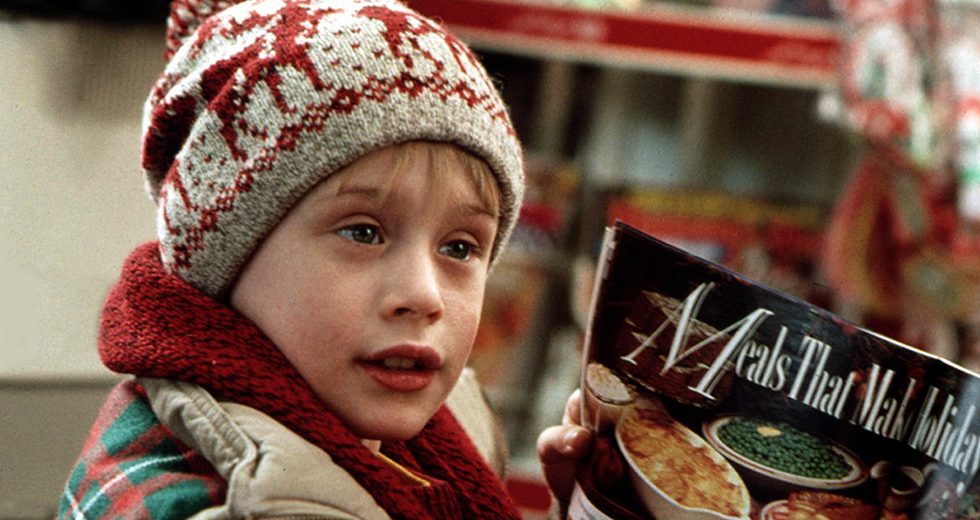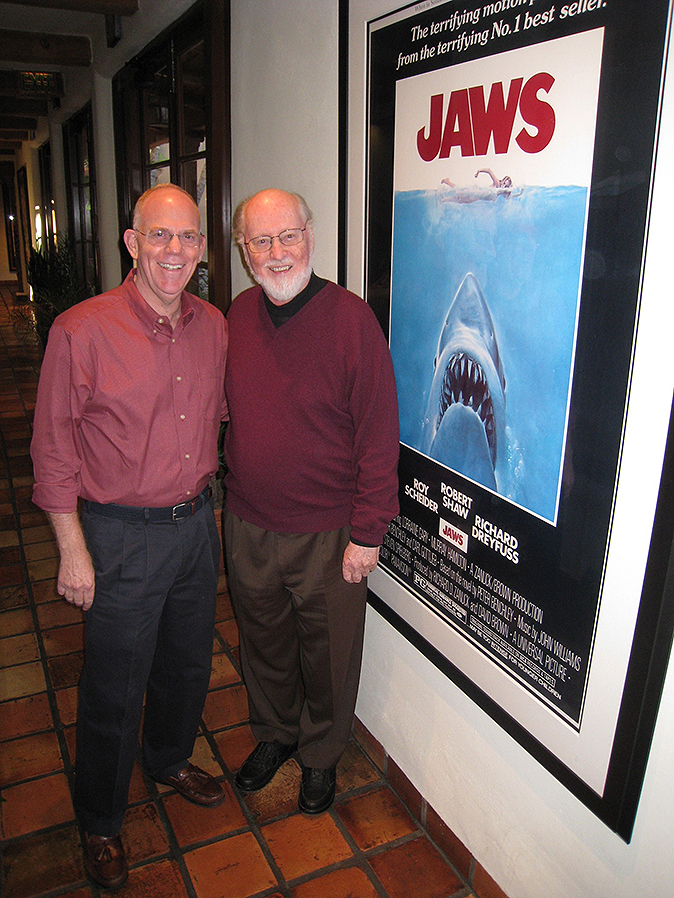
“Home Alone,” one of the highest-grossing film comedies of all time, remains the holiday-themed film that keeps on giving. Produced and written by John Hughes, the movie king of comedy during the ’80s and ’90s, the film became a franchise (with three sequels), made Macaulay Culkin the child star of his generation and turned into a yuletide staple, along the lines of “It’s a Wonderful Life” (1946) and “Miracle on 34th Street” (1947).
After presenting a live-to-picture engagement of “Home Alone” (1990) in 2015, the Chicago Symphony Orchestra is reprising the movie for a three-concert run Dec. 9-10. Back on the podium will be conductor Richard Kaufman, leading Members of the CSO and the children’s chorus Anima-Young Singers of Chicago in the presentation.

Richard Kaufman (left) and John Williams worked together on the recording of the “Jaws” soundtrack.
“Home Alone” features an Academy Award-nominated score by Hollywood master John Williams, who received another Oscar nod for the film’s theme song “Somewhere in My Memory,” written with lyricist Leslie Bricusse. Kaufman, who conducts many of the CSO’s movie presentations, believes that a big reason for the film’s success and enduring appeal is Williams’ score. The composer is legendary for his ability to use music as a dramatic leitmotif and capture atmosphere, emotion and tension through his arrangements — witness the throbbing and pulsing score of “Jaws” (1974) or the soaring anthemic quality of “Star Wars” (1977).
As a studio violinist, Kaufman played on the recording sessions of several of Williams’ key works such as “Jaws” and “Close Encounters of the Third Kind” (1977). By chance, Kaufman also was present during part of the “Home Alone” soundtrack recording.
“John is one of those great craftsman when it comes to writing music for film,” Kaufman said. “He can look at a film, a scene and a character, and do exactly what is necessary to either accentuate a character or underscore it in a subtle way. He knows exactly what a film needs and what it doesn’t need. If you listen to a score, the music is always in the right place. The scenes that work without music are allowed to live that way.
“John just has an extraordinary dramatic sense of what a film needs musically.”
Williams’ talent and insights prove essential to the finished work, observes Michael Wilhoit, the supervising sound editor on “Home Alone.” (The sound editor mixes all the sound, except for music.) Working with Chris Columbus, editor Raja Gosnell and John Williams, Wilhoit recalled, “We watched a rough cut, meaning the film was edited but without sound effects or music, and we discussed our plan. All the stunts from [the burglars] Harry and Marv [Joe Pesci and Daniel Stern] are faked. When Marv’s hand sizzles from a hot doorknob, the hand sizzling sounds are added. My question to John was how to address the stunts in the house. Does the score play [over] the impacts or does he purposely make room in the score to hear the sound effects?”
Wilhoit suggested that Williams allow breathing room for the sound effects to punctuate the structure of the physical gags. Williams’ eyes immediately lit up at the suggestion. Williams told Wilhoit: “I will write the score up to the moment of impact and let the crescendo be the sound effect.”
“The rest is history,” Wilhoit said.
A version of this article was originally published in 2015 on CSO Sounds & Stories.